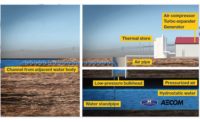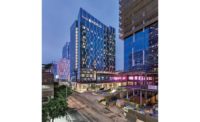Specialty Firms Tap Into Robust Market

The region’s many big, high-profile projects underway include Chase Center—home of the Golden State Warriors—in San Francisco.
PHOTO COURTESY OF OXBLUE
California’s specialty contractors continued to see a strong market in 2017. Revenue for firms participating in ENR’s annual survey reached more than $8 billion in 2017, with the top five firms accounting for nearly half that amount.
Large, high-profile projects continue to dominate the market across all sectors, from entertainment and hospitality to office and residential. One of the brightest stars continues to be the technology sector, as companies build campus after campus to house their creative employees.
“California is booming and should continue to do so,” says Jeffrey Marrs, president and CEO of ACCO Engineered Systems in Glendale, Calif. “Projects are getting bigger and bigger. Where we used to think a 25-story or 30-story building was tall, now they’re at 50 to 60 stories.”
|
Related Link |
ACCO’s largest ongoing projects in California over the last year include Chase Center in San Francisco—home of the Golden State Warriors—and the Los Angeles Rams football stadium. The firm recently completed the 72-story mixed-use Wilshire Grand Hotel in Los Angeles and Salesforce Tower in San Francisco. The mechanical and plumbing specialty contractor was ranked No. 2 on the Top Specialty Contractors list, moving up a spot as revenue rose to $983.7 million in 2017 from $916 million the previous year.
The infrastructure sector continues to boom as well, with large expansions underway at San Francisco International Airport and Los Angeles International Airport.
The market remains steady for specialty firms although the labor market remains very tight, says Brett Eckles, president of the American Subcontractors Association of California. Education remains a hot sector, with some school bond funding available for school construction, expansion and rehabilitation. Eckles also sees opportunities for private mixed-use buildings and an overall increase in private work, although rising interest rates could impact such opportunities.
Marrs sees 2019 as another boom year, but a slowdown could be possible down the road. “We do see some indications in some sectors where prices have gone up, either because of tariffs or labor unavailability,” he says. “We’ve seen projects take a breath to see if they want to move forward. It’s just two or three right now, but if a wave of that happened, we could see a slowdown in later years.”



